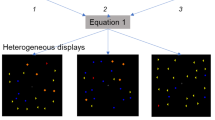Abstract
SOME years ago there appeared an account of an investigation into the cause of the sun and moon looking larger when low down than when high up in the sky. The theory advanced as the result of the investigation attributed the effect to a physiological cause. One could not expect an explanation of this kind to be applicable to all individuals, but rather that with different persons there would be different results; so I have made observations—81 in number—to find out what law applies to my own case. These observations were made by taking notice of two stars near the horizon, and then looking up near the zenith to see what stars in that situation appeared to be the same distance apart as those near the horizon. I took a great variety of different cases, the length of the compared arcs varying from 1°˙4 to 100°. I observed them also in various angles of position, from horizontal to vertical; and sometimes had the two arcs at the same angle of position upon the retina, and at other times at different angles.
This is a preview of subscription content, access via your institution
Access options
Subscribe to this journal
Receive 51 print issues and online access
$199.00 per year
only $3.90 per issue
Buy this article
- Purchase on Springer Link
- Instant access to full article PDF
Prices may be subject to local taxes which are calculated during checkout
Similar content being viewed by others
Author information
Authors and Affiliations
Rights and permissions
About this article
Cite this article
BACKHOUSE, T. Apparent Size of Objects near the Horizon. Nature 45, 7–8 (1891). https://doi.org/10.1038/045007d0
Issue Date:
DOI: https://doi.org/10.1038/045007d0
Comments
By submitting a comment you agree to abide by our Terms and Community Guidelines. If you find something abusive or that does not comply with our terms or guidelines please flag it as inappropriate.



